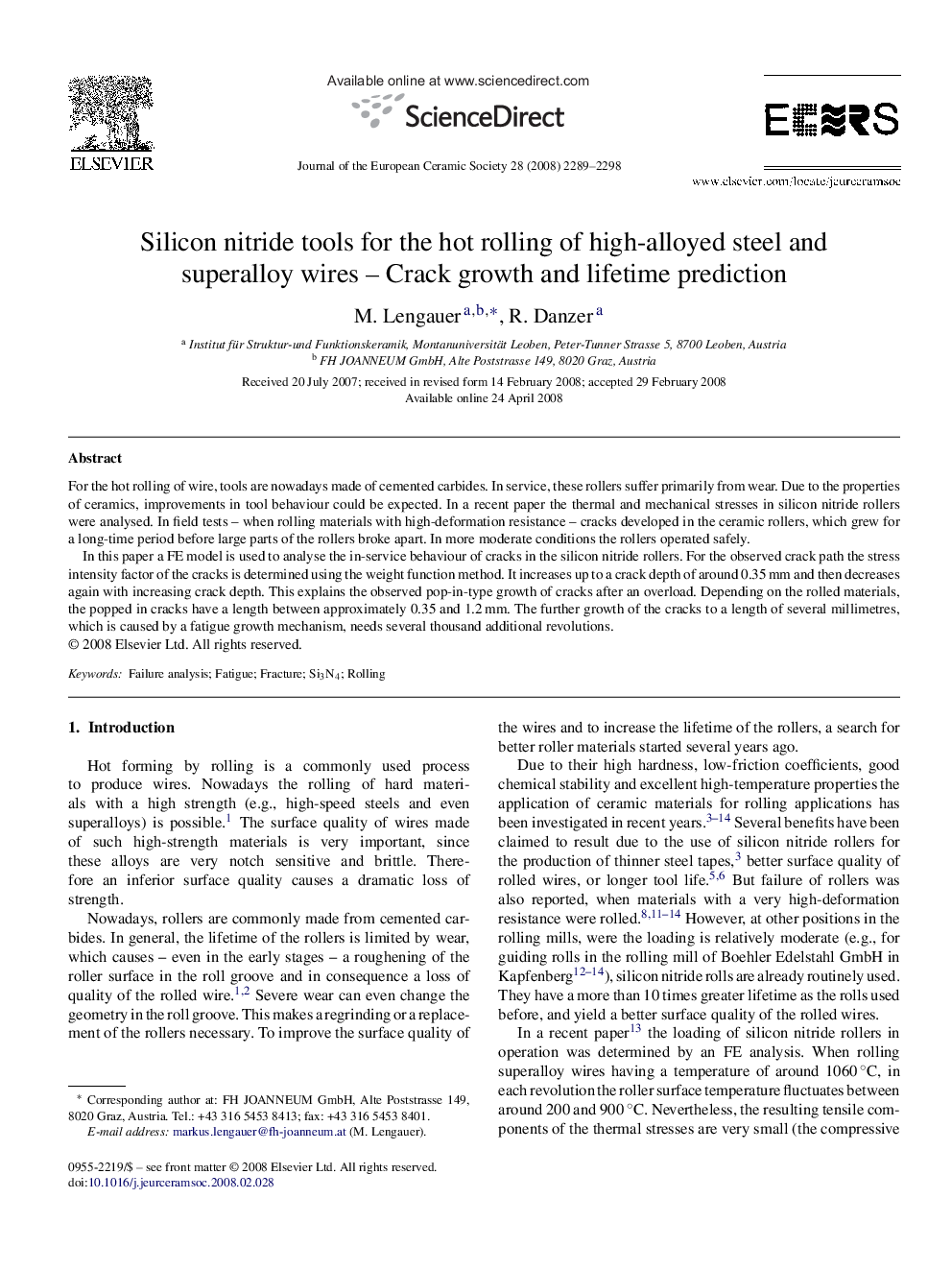| Article ID | Journal | Published Year | Pages | File Type |
|---|---|---|---|---|
| 1476123 | Journal of the European Ceramic Society | 2008 | 10 Pages |
For the hot rolling of wire, tools are nowadays made of cemented carbides. In service, these rollers suffer primarily from wear. Due to the properties of ceramics, improvements in tool behaviour could be expected. In a recent paper the thermal and mechanical stresses in silicon nitride rollers were analysed. In field tests – when rolling materials with high-deformation resistance – cracks developed in the ceramic rollers, which grew for a long-time period before large parts of the rollers broke apart. In more moderate conditions the rollers operated safely.In this paper a FE model is used to analyse the in-service behaviour of cracks in the silicon nitride rollers. For the observed crack path the stress intensity factor of the cracks is determined using the weight function method. It increases up to a crack depth of around 0.35 mm and then decreases again with increasing crack depth. This explains the observed pop-in-type growth of cracks after an overload. Depending on the rolled materials, the popped in cracks have a length between approximately 0.35 and 1.2 mm. The further growth of the cracks to a length of several millimetres, which is caused by a fatigue growth mechanism, needs several thousand additional revolutions.
